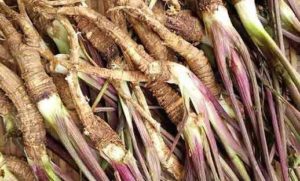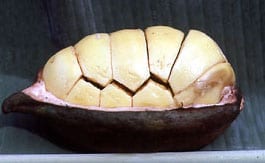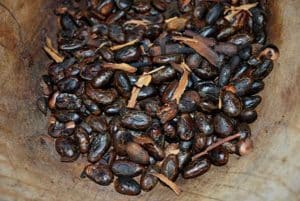How To Make Herbal Ecstasy At Home

There are thousands of herbs that have stimulating effects; and some people believe you can combine them in the perfect way to create your own legal “herbal ecstasy” at home.
But there are some risks to combining different stimulants, especially if you’re expecting them to have the same effect as ecstasy – a powerful synthetic psychedelic.
Here, we’re going to talk about stimulating herbs, which ones are the safest to use, and the different ways they can be combined. We’ll also help you decide whether it’s at all possible to make a mixture of herbs that can be legitimately called “herbal ecstasy.”
What is Herbal Ecstasy?
The term “herbal ecstasy” is used to mean three things. It can refer to:
- An individual stimulating herb that has euphoric effects.
- A blend of stimulating herbs that is specifically designed to mimic the effects of the synthetic drugs ecstasy or MDMA (molly).
- A catch-all term used by drug prohibitionists or anti-drug campaigners to refer to any kind of herbal stimulant or psychedelic.
In this article, we are going to use the term “herbal ecstasy” to mean a mixture of herbs that has a stimulating effect, but that doesn’t necessarily mirror the effects of MDMA or the synthetic drug ecstasy.
Synthetic ecstasy and MDMA are powerful substances that induce euphoria, energy, and empathy. They can send people on intense psychedelic journeys, or just be used as party drugs.
Although ecstasy pills contain mostly MDMA, they also sometimes contain speed (amphetamine) or other stimulants, and are associated with much more energy and restlessness than MDMA alone. So herbal ecstasy blends designed to mimic ecstasy pills may contain more stimulants, while herbal ecstasy blends designed to be a replacement for MDMA may be more euphoric and gentle.
It’s potentially risky to compare herbal ecstasy directly with MDMA or synthetic ecstasy, because people might end up chasing the high of MDMA by taking large quantities of stimulating herbs, which could have negative effects on the body. There are no known herbs or plants that contain MDMA, or substances that are significantly similar to it – therefore anything that claims to be a herbal version of MDMA is probably not going to feel the same.
Here, when we talk about herbal ecstasy, we’re talking about combinations of stimulating herbs that can give you a boost, or a buzz – but they’re not going to feel like MDMA, and taking too much is definitely going to make you feel uncomfortably overstimulated (and probably not in a fun way).
Common Ingredients of Herbal Ecstasy
The common brands of herbal ecstasy can vary wildly in what they contain! But generally, they will all contain at least some of these stimulating herbs, in order to provide a mixture that gives you a significant buzz:
Kola Nut
Kola nuts come from trees in the Cola genus, and it’s where the cola drink gets its name. Kola nuts contain caffeine, and kola nut powders are sometimes used in herbal ecstasy mixtures as a stimulant.
Purchase kola nut powder here!
Guarana
Guarana is a climbing plant from South America, and its seeds contain very high quantities of caffeine. Guarana powder or extracts can be used in herbal ecstasy mixtures as a strong stimulant – but remember that caffeine can be harmful (and even deadly) in high quantities.
Buy strong Guarana extract here!
Ginseng
Ginseng is a root that has been used in traditional medicine for centuries. Now, researchers are starting to discover that some alkaloids in ginseng could have antioxidant or neuroprotective effects. Ginseng extract or powder is sometimes used in herbal ecstasy blends as a nootropic or health supplement, perhaps in order to help the body recover from high stimulation.
Catmint
Also known as catnip, catmint refers to plants in the Nepeta genus which can have psychoactive effects in both cats and humans. The main species is Nepeta cataria, which has euphoric properties in most cats, and sedative effects in humans. The dried plant can be used in teas, or ground up into powder. It’s sometimes used in herbal ecstasy blends, probably to add some pleasant psychoactive effects to the mix.
Nutmeg

Nutmeg is a seed from several plants in the Myristica genus. Although you may know it as a spice used in cooking, it has been used as a psychoactive substance for thousands of years, stretching back to at least Ancient Greece. In high doses, nutmeg (thanks to the compound myristicin) can induce hallucinations and a dream-like state, but it also often causes horrible side-effects like nausea, convulsions, and a very painful hangover.
It’s included in herbal ecstasy mixtures because myristicin is a precursor molecule in the synthesis of MDMA, and it is possible that it is metabolized briefly into MDMA in the body. However the similarities to MDMA are very slim, and if you’re not careful a nutmeg experience can be very unpleasant.
Cacao
Cacao beans contain a small amount of caffeine, which is why they are sometimes used in herbal ecstasy mixes. Cacao also contains antioxidants, and is generally quite healthy for the body, so it is possibly included as a boost to bodily health.
Kanna
Kanna (Sceletium tortuosum) is a South African plant that is traditionally chewed to produce euphoric effects. It contains a number of stimulating alkaloids, and powdered kanna or concentrated extracts are used in herbal ecstasy blends to create a pleasant psychoactive effect. There are no known dangers or harms associated with the plant.
Khat

Khat is a stimulating plant that is sometimes used in place of coffee in the regions that it grows. Similarly to kanna, khat also has some euphoric effects and is sometimes found in herbal ecstasy blends for these psychoactive properties. Khat increases heart rate and blood pressure, and long-term use can have some harmful side effects, such as appetite suppression, ulcers, and reduced sex drive.
Khat is illegal in some countries, including the US, Canada, the UK, Germany, and France. This is because it contains cathinone, an alkaloid that is similar to some amphetamine molecules.
Ma Huang (Chinese Ephedra)

This is the plant Ephedra sinica, which contains alkaloids including ephedrine. Ephedrine is a powerful stimulant that can raise your heart rate, increase your blood pressure, and widen your airways.
The alkaloids in the ephedra plant can have serious adverse effects, including heart attacks, strokes and seizures; although it is sometimes used, we don’t recommend including this in any herbal ecstasy mixture.
Dong Quai

Angelica sinensis, or Dong Quai, is a traditional Chinese herb. It is said to be somewhat similar to ginseng, with a variety of health benefits, including fighting fatigue. It is used in some herbal ecstasy blends but there’s no evidence that it has a significant psychoactive effect.
Dong Quai contains coumarin – this can affect the blood’s ability to clot, so you should avoid mixing this with other blood thinners such as garlic, ginger, ginkgo, or medications like warfarin.
Blue Lotus
This bright blue flower has been used in traditional medicine for thousands of years, and was revered by ancient Egyptians as a psychoactive plant. Smoking it or drinking it in tea induces a euphoric and sedative effect. Some herbal ecstasy blends use blue lotus to add a dose of psychoactive joy to the mix.
Mexican Dream Herb
Mexican dream herb, or Calea zacatechichi, is a bitter plant than can be smoked or drank as tea. It has a slight stimulating effect, but can also be psychoactive – it is reported to induce a dream-like state and potentially euphoria. It is traditionally used to induce powerful dreams, and also to treat stomach problems.
Does Herbal Ecstasy Work?
Ultimately, there are a lot of stimulating and euphoric herbs out there, and they can all work in their own unique ways to give you a big buzz! But if you’re looking for a mixture of natural, legal herbs to give you a high that’s similar to synthetic ecstasy or MDMA, you might be disappointed.
Herbal ecstasy mixtures can get you high, and they can also be a healthy way to integrate plant medicines and natural entheogens into your life. But they’re not going to be anything like MDMA, and if you take too much they will probably just make you deeply restless and uncomfortable. Which leads us to…
Is Herbal Ecstasy Safe?
Depending on what you make herbal ecstasy with, it’s probably going to be safer than MDMA. However, when you’re using any kind of stimulant, there’s a risk of overdose. If you have a heart condition and drink too much coffee, for example, you might get yourself in trouble! Herbal ecstasy could easily land you in the hospital if you’re not careful.
So essentially, herbal ecstasy is just as safe as its ingredients. Most of the ingredients listed above are very safe in moderate amounts. But combining several stimulants could enhance their effects, and potentially give you a really bad experience! As always, start with small quantities until you’re comfortable with the blend you’re using.
What are the Safest Herbal Ecstasy Blends?
The safest herbal ecstasy blends will generally be the ones with the fewest numbers of stimulants. Anything with ephedra or ephedrine in it should be avoided, as this is a stimulant with the highest level of risk.
Try not to include more than one stimulant of the same kind; for example, don’t load up your mixture with a number of plants that contain caffeine. You might end up overdosing yourself and having a bad time.
A good starter herbal ecstasy mixture would include only one or two stimulants, such as kanna and kola nut, which complement each other without causing an overwhelming stimulation. You can then add small amounts of safe supplements like ginseng, or cacao, for their nootropic or medicinal benefits.
How to Take Herbal Ecstasy
Depending on what’s in your mixture, there are different ways to take herbal ecstasy. If you are using dried plants, you could either smoke your mixture or brew it into a tea. If you are using extracts as well, you may need to make a tea so that the liquid can dissipate properly.
Herbs and plants will have different effects depending on whether they’re smoked or ingested – but all the plants in this list can be consumed either way. Smoking is probably less healthy as it will damage your lungs over time.
You can also just prepare your mixture into a homogenous powder (if you have liquid extracts you’ll have to dissolve them into it uniformly) and distribute it into capsules. This will also make it easier to control the dose!
As with any psychoactive plant, you should start low and go slow. Try out a small dose first to test your mixture – you can also use this as a chance to tweak your ingredients until you find a blend you really like!








